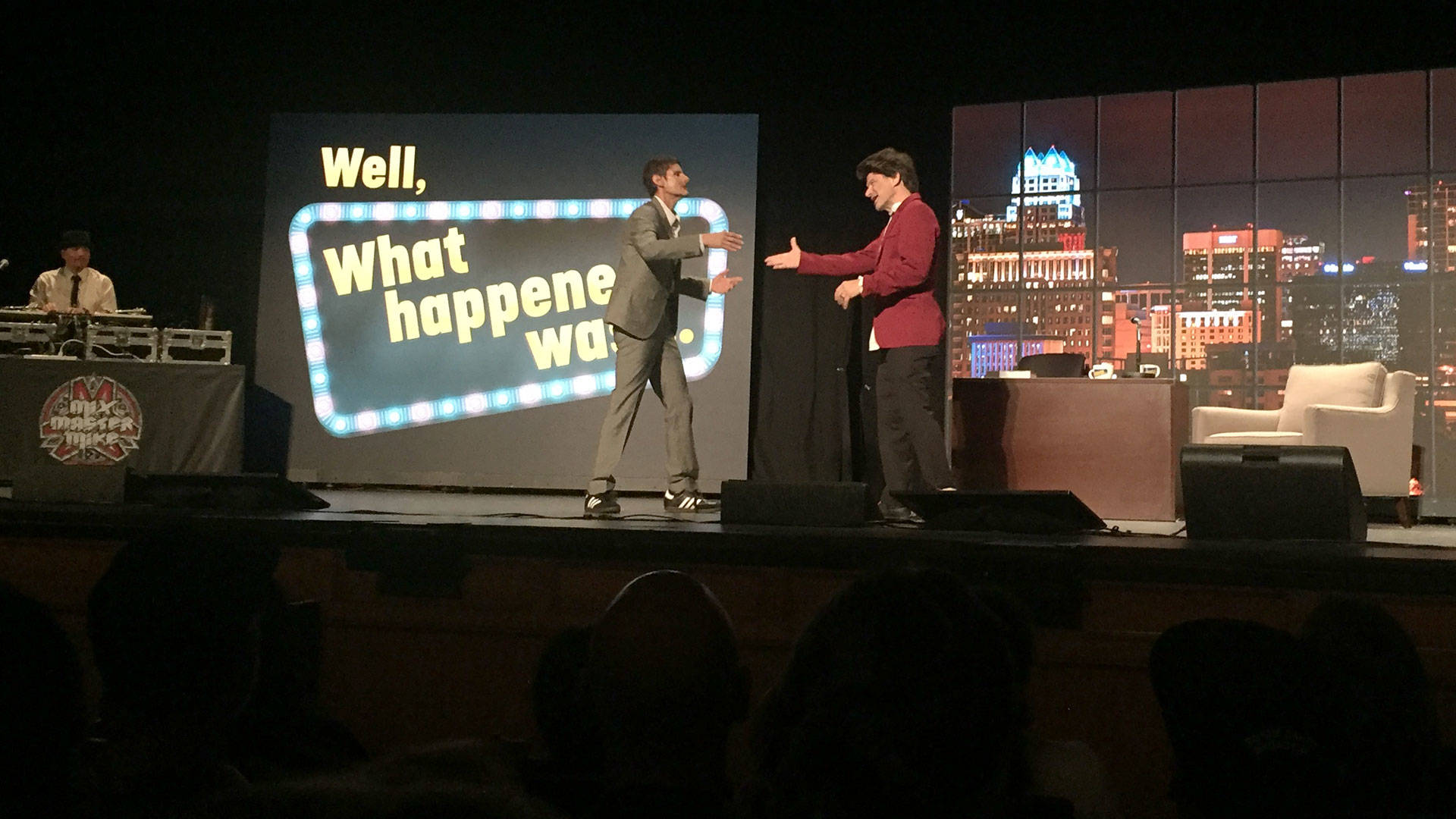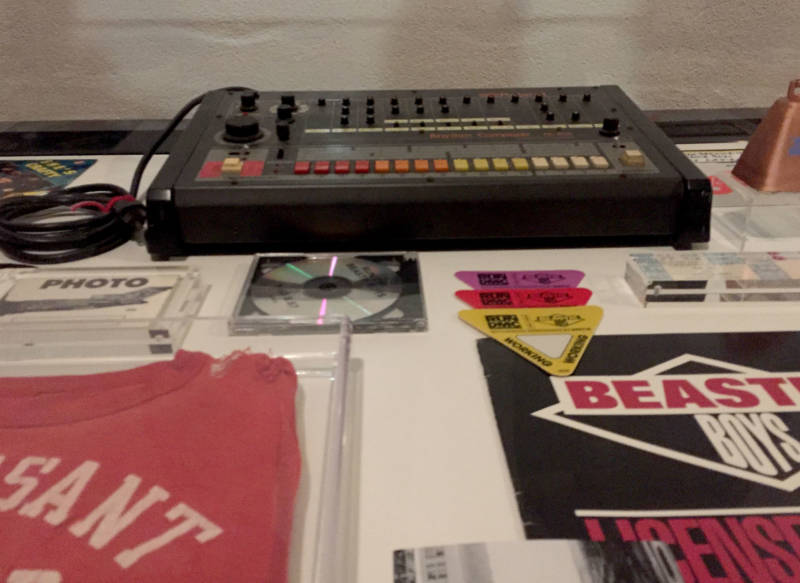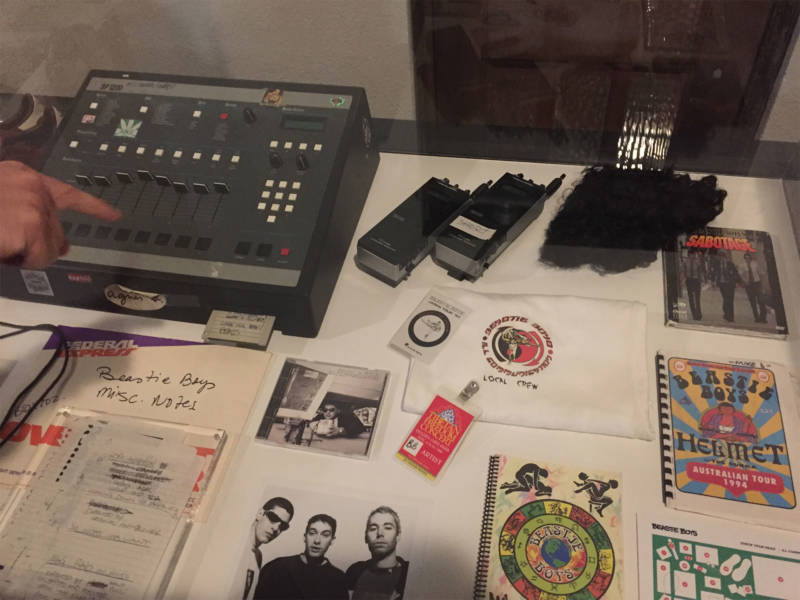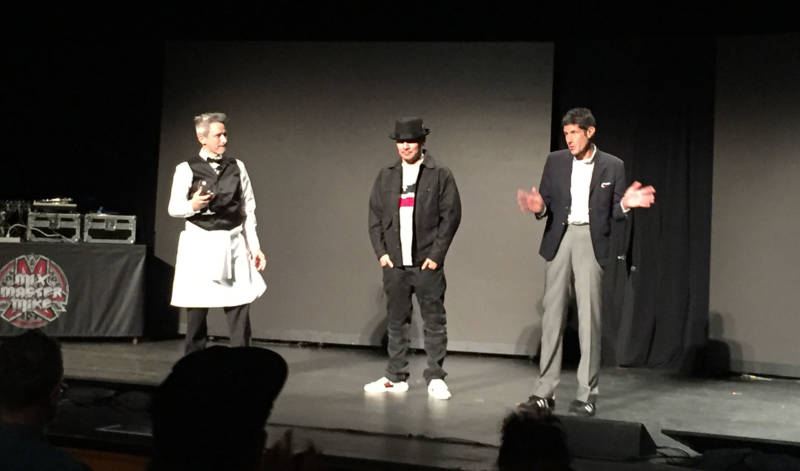In almost every way, the Beastie Boys’ appearance at City Arts & Lectures Monday night was about the person who wasn’t in the room.
Adam Yauch, the group’s raspy-voiced MCA who died of throat cancer in 2012, loomed large over the proceedings, from the surviving members’ opening story about Yauch’s elaborate pranking skills to a bittersweet eulogy on his friendship and dedication that closed the two-and-a-half-hour show.
Out on the road to promote Beastie Boys Book, a massive 571-page retrospective, Mike D and Ad Rock did away with with City Arts & Lectures’ usual orange-chairs-and-end-table setup and instead presented a theatrical series of vignettes, complete with costume changes, lighting cues and elaborate sets.
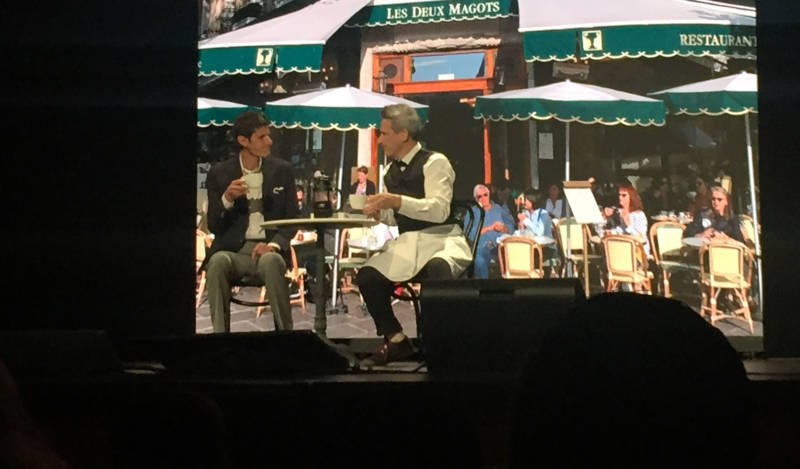
Flanked by two giant video screens and soundtracked by a stage-right DJ Mix Master Mike, the two drank espresso at a French coffee shop one minute, and sat for a late-night talk show segment the next. At one point, Mike D appeared in a smock and red beret, painting a giant canvas of himself nude in a bathtub and getting snacks from a nearby refrigerator.
In other words, Ad Rock and Mike D were the same jokesters who donned wigs and walkie-talkies in the “Sabotage” video and seared themselves into 1990s culture. Often, it was hard to tell when the two were being serious—especially with an ongoing gag of the two getting into tiny arguments, which stopped being funny after the first hour and routinely threw off the pacing. But when reading from the book—or rather, from onstage teleprompters—the reflections of the Beasties’ genesis in 1980s New York and creative development in the 1990s came off as vivid and heartfelt.
